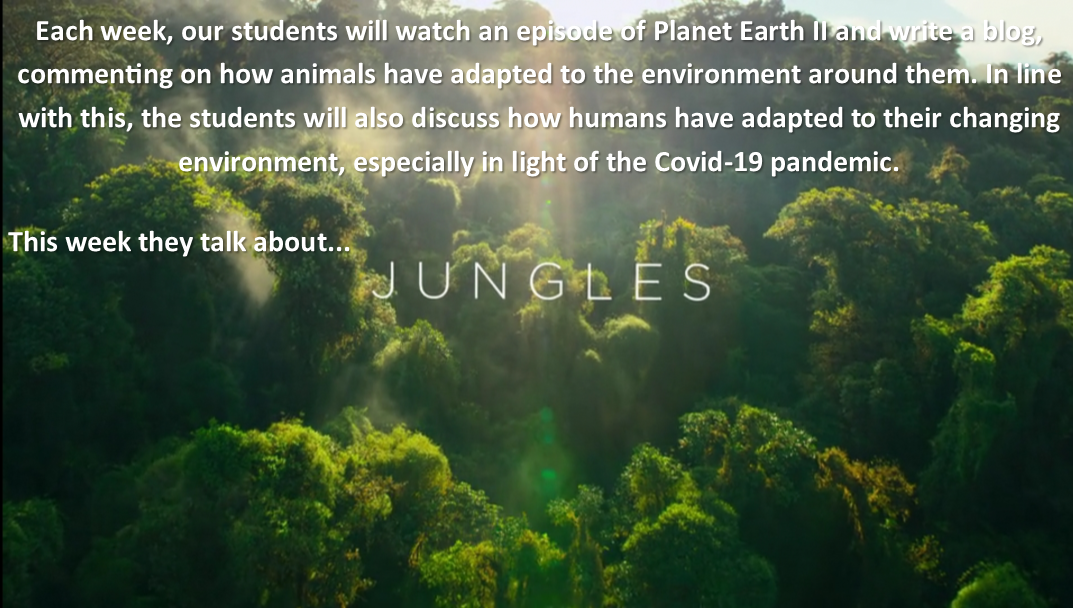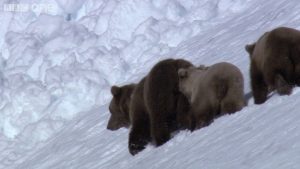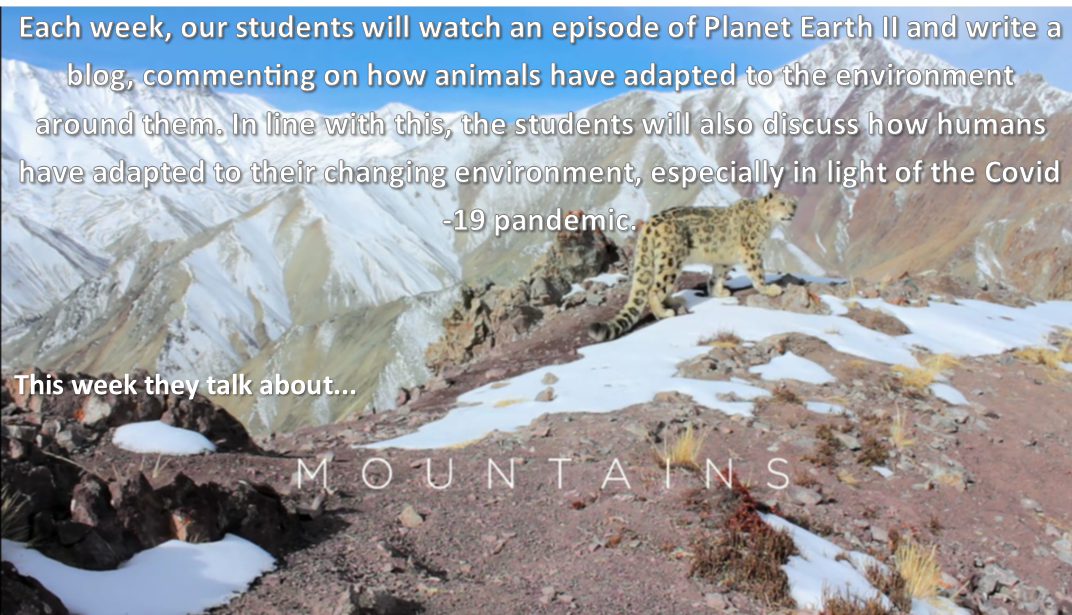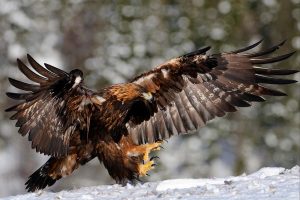Planet Earth 2 – Jungles – Aine Mallon
Planet Earth 2 – Jungles
Guest Blog by: Aine Mallon
Introduction
Jungles/rainforests are often called the lungs of the planet for their part in absorbing carbon dioxide and producing oxygen which the animals and plants depend upon for survival. Jungles are home to half of the world’s animals and plants on land. In this report I will discuss how different species within this habitat have adapted to survive due to many factors such as competition for food and limited space, along with the negative implications related to human activities and climate change. I also want to highlight how we can refer to the survival skills within the animal kingdom during COVID-19.
Indri-primate
Survival is not easy for this species as they face many challenges in relation to all striving for food and space in the area. The jungle has been described as the most competitive place on earth for survival. However, the indri has adapted to jungle life by making distinctive songs, which can last from 45 seconds to more than 3 minutes. This is done not only for solidifying contacts between groups, the songs may communicate territorial defence and boundaries, reproductive potential of the group members, and warning signals. This reminds other species to not cross their territory because the jungle is a sanctuary for all to live peacefully.

Another primate which has adapted to their habitat in the jungle is the spider monkey. They are built for climbing because of their distinctive features: the prehensile tail and the hook-like hands, both making the spider monkey ideal for arboreal (tree) life. What we can gather from both these species is their dependence on their family as they thrive in big social groups. During these uncertain times what we can rely on is family and friends to help get us through this. Technology has allowed us to see loved ones when we cannot visit, through skype and FaceTime, to still be there for each other. Family is very important within the human and animal kingdom, during COVID-19 we are relying on loved ones to support one another and it is bringing families together again.

The Hura-tree
Everything in the jungle competes for space. This evergreen-tree was said to have raced for space to ensure it received light from the sun to grow in to a giant tree, now it has risen above the gloom of the jungle floor. With this tree being so tall (some are measured at 40 metres) it allows it to reach the sunlight meaning that many plants can use it. Its successful growth has given life to other plants including orchids and figs. This is a prime example of the features and characteristic of the jungle working together to sustain all matter of life. It is also a safe place for a diversity of plants to grow because of its common name ‘Monkey-no-climb tree’ which is in reference to the characteristic spiky trunk. Plants can thrive here on the taller parts of the tree to receive enough sun for photosynthesis as well as having no fear of monkeys too.
We have witnessed a range of panic-buyers overloading with one of the same items, however the competition for resources has calmed down now. People are beginning to see the bigger picture and that this is a time to help all those in need by volunteering to deliver necessities to people’s homes.
The impact of the weather for different species
Jungles are the richest place on earth, they have even been known to ‘make their own weather.’ Trees are a vital part of this in the jungle, because the trees gather rainwater on their leaves which is then returned to the atmosphere as vapour, in a way, the trees breathe out clouds. Rainforests are subject to such heavy rainfall, for example in Brazil, trees can be submerged from rain. Due to this it provides an opportunity for other species you would not expect to find in the rainforest. The river dolphin has been found here during the heavy rainfall season. They are almost totally blind in this water; however, river dolphins use their conical-shaped teeth and long beaks to capture fast-moving prey in murky water. These species are well-adapted to living in warm, shallow waters.

It is very unusual to see dolphins here, but we have witnessed many shocking sightings of species in parts of the world during COVID-19. Dolphins and swans were indeed spotted in some of Italy’s waterways after the nationwide lockdown was imposed. In the jungles, where there is very little human interference, we have learnt that dolphins migrate to these waters. Just like in the rainforest, as our world has been put at a stop with no tourism and work, we are witnessing a change in the natural environment and where once was the busiest and polluted canals in Italy, is a sanctuary for different species. COVID-19 may be a way for the nation to see how the natural world will reclaim its space during this silent time, and the environment will heal itself.
The impacts of human activities and climate change
The jungles are a place of wonder and magic, meant to be a safe place for the species within it however 10,000 square kilometres of Amazon rainforest has been destroyed in the last year. 90% of animals spend their whole lives in trees but deforestation is continuing at alarming rates. The loss of trees and other vegetation will increase the rate of climate change, desertification, soil erosion, fewer crops, flooding, increased greenhouse gases in the atmosphere, and a host of problems for indigenous people. Tropical deforestation accounts for up to 15% of net global carbon emissions each year.
Trees and other plants, like all living things, are made up of carbon. But when forests are cleared or burned, much of that carbon ends up in the atmosphere, like burning fossil fuels. This carbon changes the planet’s climate and contributes to rising temperatures, stronger storms, more severe droughts and rising sea levels.
We need to act now and there are many ways everyone can help protect the jungles to protect its value and species within it by,
- Teaching others about the importance of the environment and how they can help save rainforests.
- Restore damaged ecosystems by planting trees on land where forests have been cut down.
- Encourage people to live in a way that doesn’t hurt the environment.
- Support companies that operate in ways that minimize damage to the environment














